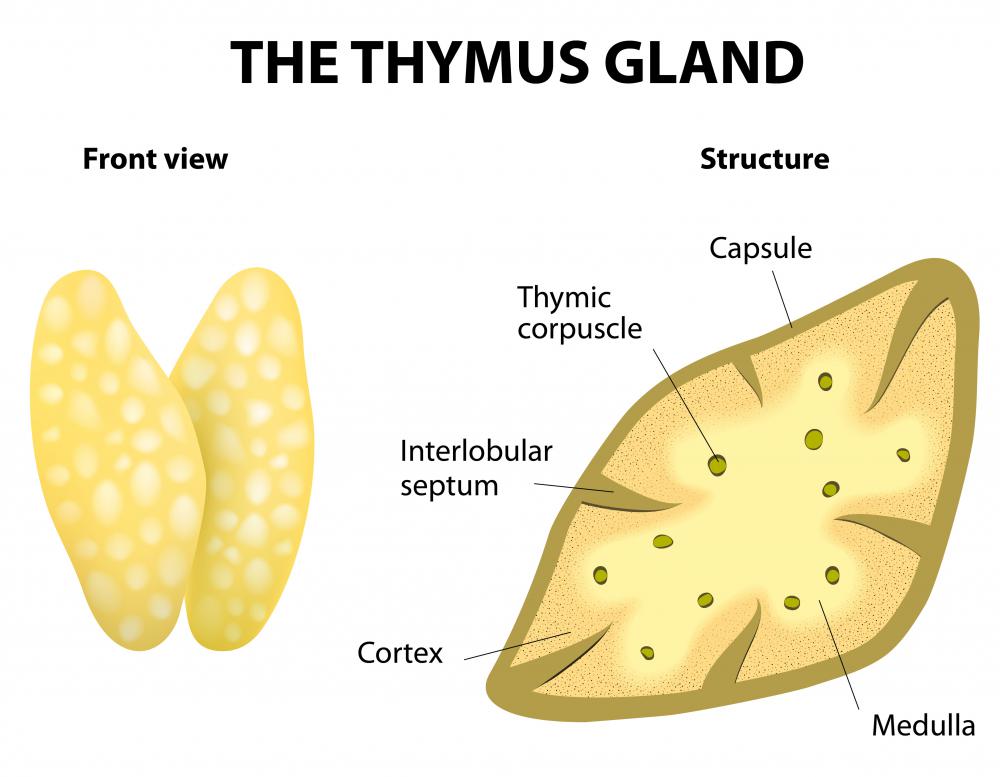At WiseGEEK, we're committed to delivering accurate, trustworthy information. Our expert-authored content is rigorously fact-checked and sourced from credible authorities. Discover how we uphold the highest standards in providing you with reliable knowledge.
What Are Mature Lymphocytes?
Mature lymphocytes are white blood cells that travel through the lymphatic system and help humans and animals fight diseases. All mature lymphocytes are either T cells or B cells. T cell lymphocytes grow to several different sizes, while all B cell lymphocytes are generally the same size. Both kinds of white blood cells develop in bone marrow, but some travel to different areas of the body to mature. They also perform slightly different functions, though both kinds of lymphocytes attack invasive cells and tissue.
T cell lymphocytes develop inside the bone marrow, produced by stem cells there. They then transfer to the thymus gland where they develop completely. These lymphocytes then travel to lymph nodes, where they’re transferred to the blood stream, if necessary. The majority of T cells are extremely small, but a handful of these cells grow to about twice the size of the rest. The large T cells are like the tanks of the immune system, while the small cells are like the cavalry.

All T cell lymphocytes take care of cell-mediated immunity. This means that when a cell or group of cells signals that they’re in distress, a group of T cells rushes to the site to absorb and destroy the irritation. The irritation could be bacteria, a virus, or excess waste. Viruses are especially nasty because they replicate inside cells, causing them to burst. It often takes the work of thousands of small, mature lymphocytes, as well as a handful of larger T cells, to take care of these invaders.

B cell lymphocytes also develop in the bone marrow, but they mature there as well. Mature lymphocyte B cells then travel constantly throughout the body, a bit like sentries. When these lymphocytes detect an invader in the body, they turn into plasma that produces antibodies. This is called a humoral immune response because the B cells turn into plasma, which is a humor — or secretion — in the body. It contains no actual cells, just antibodies. Many antibodies remain in the bloodstream after the threat is removed, which is why it is impossible to catch the exact same cold or flu twice.

All mature lymphocytes work together when there’s a threat to the body. As mentioned above, B cells act like perimeter guards. When they turn into antibody-producing plasma, T cells swoop in to attack the invading force as well. Sometimes just one group of lymphocytes will attack, but this doesn’t happen often. The body produces both kinds so they can work in conjunction.
AS FEATURED ON:
AS FEATURED ON:














Discuss this Article
Post your comments